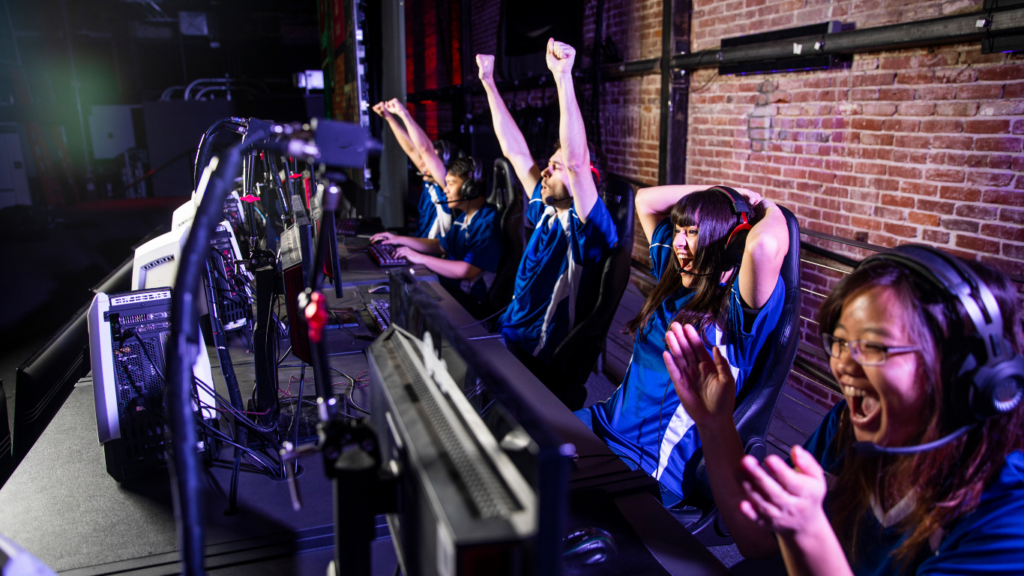Betting on esports isn’t just about luck—it’s about strategy. With the right insights into players and teams, you can turn guesswork into informed decisions. I’ve seen how understanding performance trends, playstyles, and team dynamics can give bettors a serious edge.
Esports thrives on data, and every match tells a story. From player stats to team synergy, there’s a wealth of information waiting to be tapped. By diving into these details, you can spot patterns, predict outcomes, and make smarter bets that go beyond the surface.
Understanding The Importance Of Insights For Esports Betting
- Using insights in esports betting improves accuracy and strategy. Every match generates data that reveals player form, team synergy, and adaptation patterns. Leveraging this information transforms guesses into calculated predictions.
- Analyzing player insights is essential. Performance metrics such as kill-death ratio, average damage per round, and win percentages highlight a player’s impact. For example, if a star player’s form dips, their team’s outcome can shift dramatically.
- Examining team dynamics provides a broader perspective. Team compositions, recent head-to-head results, and map preferences show strengths and weaknesses. A team’s poor performance on specific maps, like Dust II in CS:GO, could indicate betting risks.
- Monitoring recent trends sharpens decision-making. Tracking roster changes, meta shifts, and tournament results identifies factors influencing performance. For instance, a team excelling in the current meta gains a significant advantage.
- Combining individual, team, and trend insights builds a data-driven betting strategy.
Analyzing Player Performance Metrics
I focus on player performance metrics to uncover valuable insights that drive smarter esports bets. These metrics highlight individual strengths, weaknesses, and overall contributions to team success. Understanding these data points ensures better-informed decisions.
Key Performance Indicators To Consider
I examine specific Key Performance Indicators (KPIs) to assess player impact. Kill-death ratios (K/D), average damage per round (ADR), and assist rates reveal offensive and defensive capabilities. High K/D ratios often indicate consistent fragging potential, while stable ADR values signal sustained performance. Assist rates show coordinated gameplay, essential for team-oriented competitions. For example, a player with a 1.35 K/D and high assist rate can be pivotal in team fights.
Objective participation percentages, such as time spent capturing points or controlling the map, also provide critical insight. Players heavily involved in objectives tend to drive game-winning opportunities. For instance, in MOBAs, players with high tower damage or crowd control effectiveness prove instrumental in securing victories. Additionally, clutch win statistics, like 1vX win percentages, highlight a player’s ability to perform under pressure.
Evaluating Historical Data For Trends
I analyze historical performance data to identify trends that predict future outcomes. Long-term win percentages and average stats per tournament help me evaluate consistency over time. For instance, a player maintaining a 60% win rate across events demonstrates reliability. Comparing past peak metrics to recent results highlights slumps or improvements.
Tracking head-to-head records offers insights into how players perform against specific opponents. For example, a consistently successful duelist in FPS games may struggle against a rival with a superior playstyle. Evaluating recent stats following significant events, such as role changes or team transfers, helps spot adaptation trends. A player posting increasing K/D values after joining a new roster indicates successful integration and potential upward momentum.
Assessing Team Dynamics And Strategies

Analyzing team dynamics and strategies reveals critical factors impacting match outcomes. This assessment uncovers competitive strengths, potential weaknesses, and the ability to adapt under pressure.
Understanding Team Composition
Team composition serves as the backbone of any esports strategy. Examining role allocations, individual responsibilities, and player synergy helps determine a team’s overall cohesion. For instance, balanced compositions featuring complementary skills like:
- strategy execution
- aggressive play
- support
can outperform teams overly reliant on a single role. Roster stability also plays a significant role in assessing dynamics. Teams with recent player swaps may struggle with communication or coordination, whereas established lineups often demonstrate refined synergy. Understanding how substitute players or role adjustments influence this cohesion provides insight into match readiness.
Evaluating Play Style And Adaptability
Evaluating a team’s playstyle reveals their strategic preferences and execution strengths. Teams employing aggressive tactics may dominate weaker opponents but lose to disciplined, defensive squads. Tracking historical gameplay patterns differentiates predictable strategies from dynamic, adaptive ones.
Adaptability defines whether a team can counter evolving strategies or thrive under changing gameplay conditions. Observing adjustments in response to meta shifts, in-game setbacks, or momentum changes helps gauge resilience. Teams showing versatility succeed across diverse match scenarios, especially in high-stakes events or multi-round formats.
Leveraging Advanced Esports Analytics Tools
Esports analytics tools provide bettors with access to invaluable data, enhancing decisions with precision and speed. These platforms offer real-time updates and predictive models, transforming raw data into actionable insights.
Tools To Track Real-Time Data
Tracking real-time data improves the ability to adjust betting strategies during live matches. Advanced platforms like Esports Charts and HLTV deliver up-to-the-second updates on in-game statistics, including kill-death ratios, team economy, and map control. These tools also display live win probabilities based on match progression, offering insights into momentum shifts. For example, monitoring player performance mid-match can reveal how clutch plays or unexpected strategies are altering the outcome. By incorporating this data, I can react to dynamic scenarios and align my bets with unfolding events.
Insights From Predictive Analytics
Predictive analytics tools forecast outcomes by analyzing historical data, player metrics, and team trends. Programs such as Shadow.gg and Gosu.ai use machine learning algorithms to identify patterns like win-rate fluctuations, map preferences, or synergy impacts following roster changes. For instance, if a team historically excels on control maps but struggles post-meta updates, these tools signal potential weaknesses. By leveraging these predictions, I gain an edge in identifying undervalued bets or anticipating upsets in specific scenarios. Predictive insights also help in pre-match evaluations, ensuring my betting strategy aligns with calculated probabilities over guesswork.





